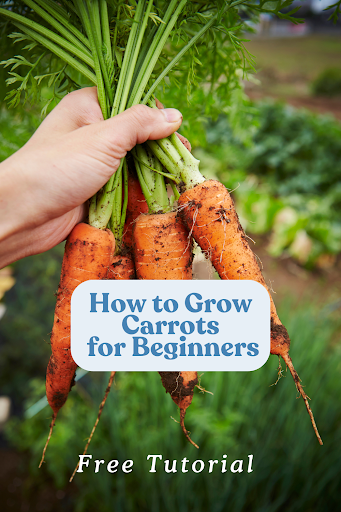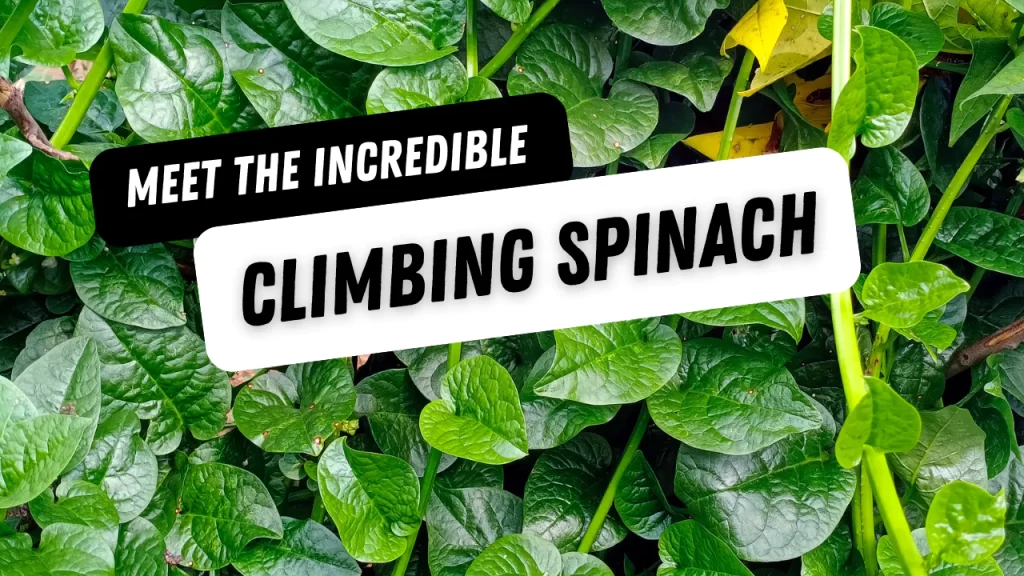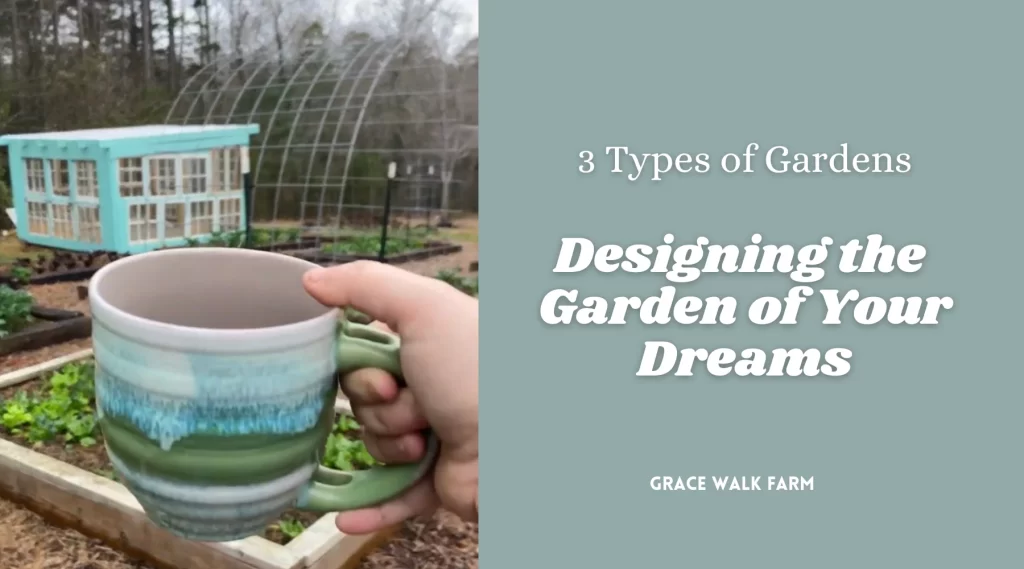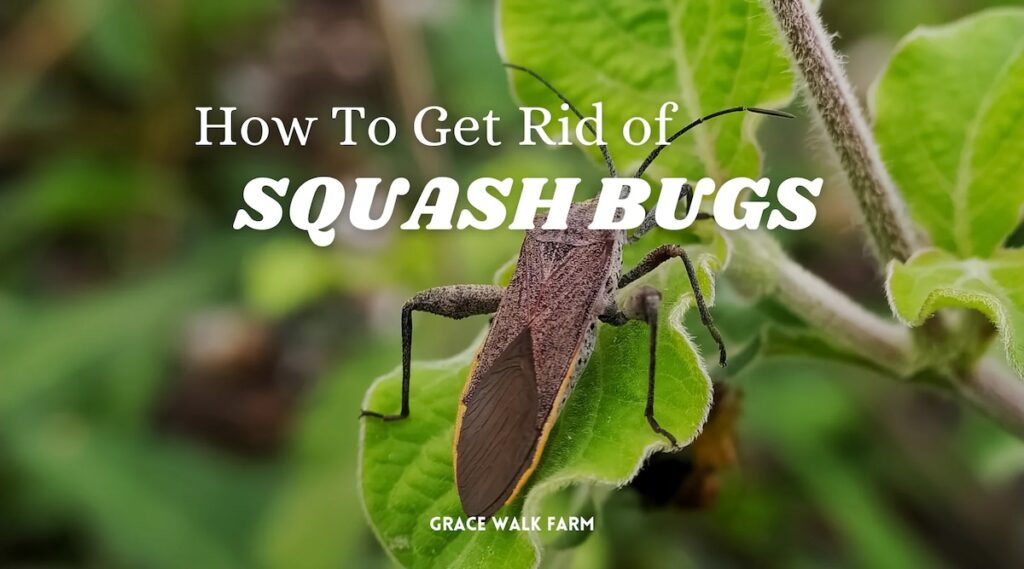If you’ve ever pulled a fresh carrot from the ground, wiped off the dirt, and taken a bite, you know just how rewarding it is to grow your own. Store-bought carrots simply can’t compete with the flavor, texture, and freshness of homegrown ones. But if you’ve tried growing carrots before and ended up with stubby, misshapen roots or poor germination, you’re not alone! Carrots can be a bit picky, but once you know what they need, they’re actually one of the easiest vegetables to grow. This guide will walk you through how to grow carrots from seed to harvest, ensuring a bountiful supply of sweet, crisp roots straight from your garden.
Welcome to Grace Walk Farm, our family homestead in western NC. We share the highs and lows of our homestead journey, in hopes that it will encourage you to grow your own food too. Click here to grab our Beginner Garden Guide for free! Join our 600K strong Instagram community of homesteaders here. Thanks for stopping by!
Choosing the Right Variety for Your Garden
Before planting, it’s important to choose the right carrot variety for your soil and growing conditions. Some types perform better in loose, sandy soil, while others tolerate heavier clay. Here are a few beginner-friendly options:
- Nantes – Sweet and cylindrical, perfect for beginners with average soil.
- Danvers – A classic variety that grows well in heavier or less-than-perfect soil.
- Imperator – Long and slender, ideal for deep, loose soil.
- Chantenay – Short and thick, great for shallow or compacted soil.
- Parisian – Small and round, perfect for container gardening or rocky soil.
How to Plant Carrots
Carrots need the right conditions to germinate well and grow straight, uniform roots. Follow these steps for success:
1. Prepare the Soil
Carrots grow best in loose, well-draining soil free of rocks and debris. They struggle in compacted or heavy clay soil, so if your garden has those conditions, consider raised beds or adding compost and sand to improve aeration.
- Remove any large clumps, rocks, or sticks that could cause the roots to fork.
- Avoid using fresh manure or high-nitrogen fertilizers, which can lead to hairy, misshapen carrots.
- Loosen the soil at least 12 inches deep to encourage long, straight growth.
2. Sow the Seeds
Carrot seeds are tiny and need to be planted directly in the garden since they don’t transplant well.
- Plant seeds 1/4 inch deep, spacing them about 1-2 inches apart.
- Keep rows at least 12 inches apart for easy thinning and harvesting.
- Lightly cover with fine soil or compost and gently water to avoid washing seeds away.
- Keep the soil consistently moist until germination, which can take 1-3 weeks.
3. Thin the Seedlings
Once your carrot seedlings are a couple of inches tall, they’ll need to be thinned to avoid overcrowding.
- Thin to 2-3 inches apart to give roots space to grow.
- Snip the extra seedlings at the soil level rather than pulling them out to avoid disturbing nearby plants.
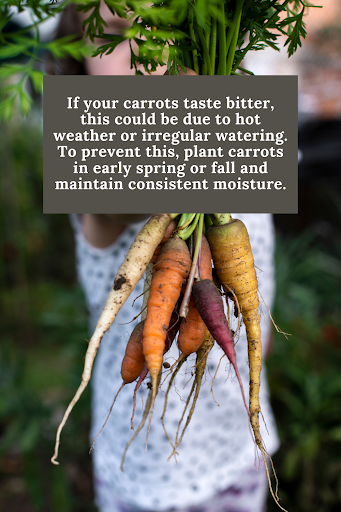
How to Care for Carrots
Carrots are relatively low-maintenance but do best with a little attention throughout the growing season. You’ll mainly need to care for them closely when they are young. Once established, carrots are pretty hardy and can grow undisturbed.
Watering
Carrots need consistent moisture, especially during germination and root development.
- Keep soil evenly moist but not waterlogged.
- Deep watering once or twice a week is better than frequent, shallow watering.
- Avoid heavy watering as the roots mature to prevent cracking.
Mulching
A light layer of mulch helps retain moisture and suppress weeds.
- Use straw, shredded leaves, or grass clippings.
- Keep mulch thin around young seedlings to prevent burying them.
Fertilizing
Carrots don’t need much feeding, but a little boost can help.
- Use a balanced, low-nitrogen fertilizer (too much nitrogen promotes leafy growth instead of roots).
- Compost or aged manure added before planting is usually enough.
Managing Common Carrot Pests and Diseases
Carrots are relatively pest-resistant, but a few common issues can arise.
Common Pests:
- Carrot Rust Fly – Larvae tunnel into roots, causing rot. Use row covers and practice crop rotation.
- Aphids – Small sap-sucking insects that can spread disease. Control with neem oil or insecticidal soap.
- Cutworms – These can chew seedlings at the base. Handpick or use collars around young plants.
Common Diseases:
- Fungal Issues – Avoid overwatering and provide good airflow to prevent fungal diseases.
- Cracking or Splitting – Caused by inconsistent watering. Keep soil evenly moist to avoid sudden growth spurts.
Best Companion Plants for Carrots
Certain plants grow well alongside carrots, helping deter pests and improving soil conditions.
Good Companions: Radishes, onions, garlic, leeks, lettuce, and herbs like rosemary and sage.
Bad Companions: Dill and parsnips, as they can stunt carrot growth or attract pests.
Troubleshooting Common Carrot Problems
Carrots can sometimes encounter issues that impact their growth. If you find your carrots are forked or twisted, the cause is likely compacted or rocky soil. Loosening the soil and removing debris before planting can help.
Small or stunted carrots are often a result of overcrowding or poor soil quality. Be sure to thin seedlings properly and enrich the soil with compost before planting. If your carrots taste bitter, this could be due to hot weather or irregular watering. To prevent this, plant carrots in early spring or fall and maintain consistent moisture.
Slow germination can occur if the soil is too dry or forms a crust, so keeping the soil lightly moist and covering it with a fine layer of compost can encourage better sprouting.
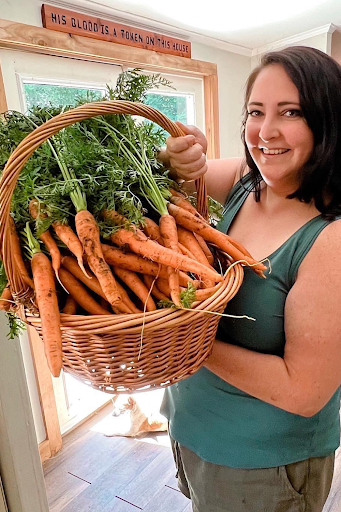
Harvesting and Storing Carrots
Carrots are usually ready for harvest in 60-80 days, depending on variety.
- Test readiness by gently pulling up one carrot.
- If it looks the right size, harvest by loosening the soil and pulling gently.
- For sweeter carrots, leave them in the ground through a light frost—cold temperatures enhance their flavor.
- Store in the refrigerator for fresh use or in damp sand in a cool basement for long-term storage.
Now that you know how to grow carrots, you’re ready to enjoy sweet, crunchy, homegrown goodness right from your backyard! With proper soil preparation, regular watering, and a little patience, you’ll be harvesting beautiful carrots in no time. Whether you eat them fresh, roast them, or preserve them for later, nothing beats the flavor of a garden-grown carrot. So grab your seeds and get planting—your best carrot crop yet is just a season away! Happy gardening!
Also check out these blogs:
- How to Grow Cauliflower: A Beginner’s Guide
- Why I Make Bone Broth for Flu
- Winter Wellness Tea: A Cozy Cup of Immune Support
- Hidden Benefits of Snow and Winter Weather for Your Garden
- Winter Gardening: Hacks to Keep Your Green Thumb Warm and Your Organic Garden Thriving
- How to Make Tinctures: Preserved Medicinal Herbs in Liquid Form

